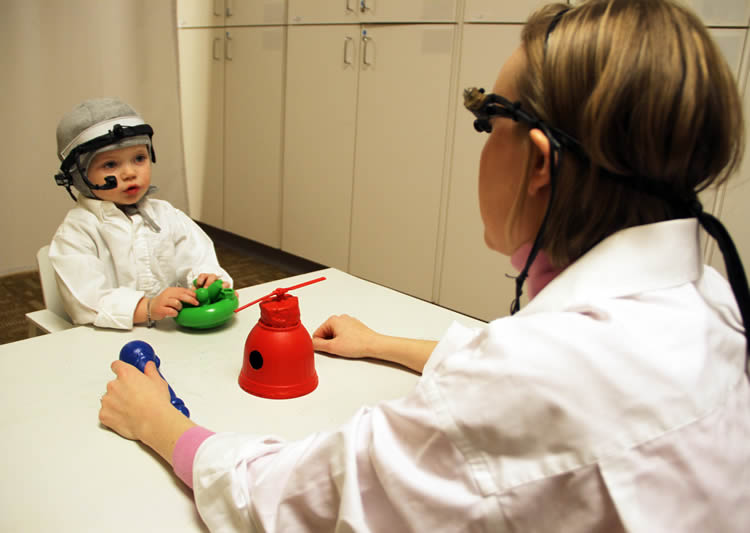Summary: A new study aims to discover how children with cochlear implants learn new words differently from children with normal hearing.
Source: Ohio State University.
Hi-tech approach uses eye-tracking devices to learn how children absorb information.
A new study at The Ohio State University Wexner Medical Center is examining how children with cochlear implants learn new words differently than children with normal hearing. Though implants allow children to hear, many still struggle with language skills for years because learning words with the aid of cochlear implants isn’t the same as learning naturally with normal hearing.
“We want to understand why the language of children with cochlear implants tends to be delayed compared to typically-developing children,” said Derek Houston, who is leading the study at The Ohio State University Wexner Medical Center’s Buckeye Center for Hearing and Development. “Our approach is to examine how the hearing loss affects their basic, but very complex, interactions with their parents. That requires looking at that interaction from different angles and intensely observing every aspect of what happens during word learning.”

The study uses several angles, including head-mounted cameras with eye-trackers, to record exactly where a child’s focus is, what they’re holding and how they react when a new word is said. After parents present toys with unusual names to the children, researchers record their reaction and review the footage to look for patterns and signs of word recognition. “We’re discovering how hearing loss affects that dynamic interaction with their parent, and how those effects, in turn, impact their general cognitive and language development,” said Houston.
Learning more about how children with cochlear implants absorb information will help parents better guide language development. Houston says he hopes to expand his research and use the same method to discover how other populations of children learn differently, such as those with autism or attention deficit disorder.
This NeuroscienceNews article was submitted directly to us by Shreya Bhola, on behalf of Ohio State University.
Source: Shreya Bhola – Ohio State University
Image Source: NeuroscienceNews.com image is credited to the researchers/Ohio State University.
Video Source: The video is credited to OSU Wexner Medical Center.
[cbtabs][cbtab title=”MLA”]Ohio State University “Study Aims to See How Children with Cochlear Implants Learn Words.” NeuroscienceNews. NeuroscienceNews, 7 April 2017.
<https://neurosciencenews.com/cochlear-implants-word-learning-6359/>.[/cbtab][cbtab title=”APA”]Ohio State University (2017, April 7). Study Aims to See How Children with Cochlear Implants Learn Words. NeuroscienceNew. Retrieved April 7, 2017 from https://neurosciencenews.com/cochlear-implants-word-learning-6359/[/cbtab][cbtab title=”Chicago”]Ohio State University “Study Aims to See How Children with Cochlear Implants Learn Words.” https://neurosciencenews.com/cochlear-implants-word-learning-6359/ (accessed April 7, 2017).[/cbtab][/cbtabs]






